Custom Button Bit for Rock Drilling Manufacturer in China
We offer a wide selection of high-performance button bits for efficient rock drilling. Our bits feature durable tungsten carbide inserts for optimal penetration and longevity in various rock formations. Designed for reliability and productivity, they ensure consistent performance and reduced wear. Choose from a range of sizes and configurations to match your specific drilling requirements and achieve superior results.
Sinodrills - Your Trusted Button Bit for Rock Drilling Manufacturer from China
Sinodrills, your trusted button bit manufacturer from China, delivers reliable and high-performance solutions for rock drilling. Our extensive range of button bits is engineered with premium tungsten carbide for exceptional wear resistance and efficient penetration in diverse rock formations. We are committed to providing quality, durability, and cost-effectiveness to meet your specific drilling needs. Partner with Sinodrills for dependable rock drilling tools.
Various Button Bit for Rock Drilling
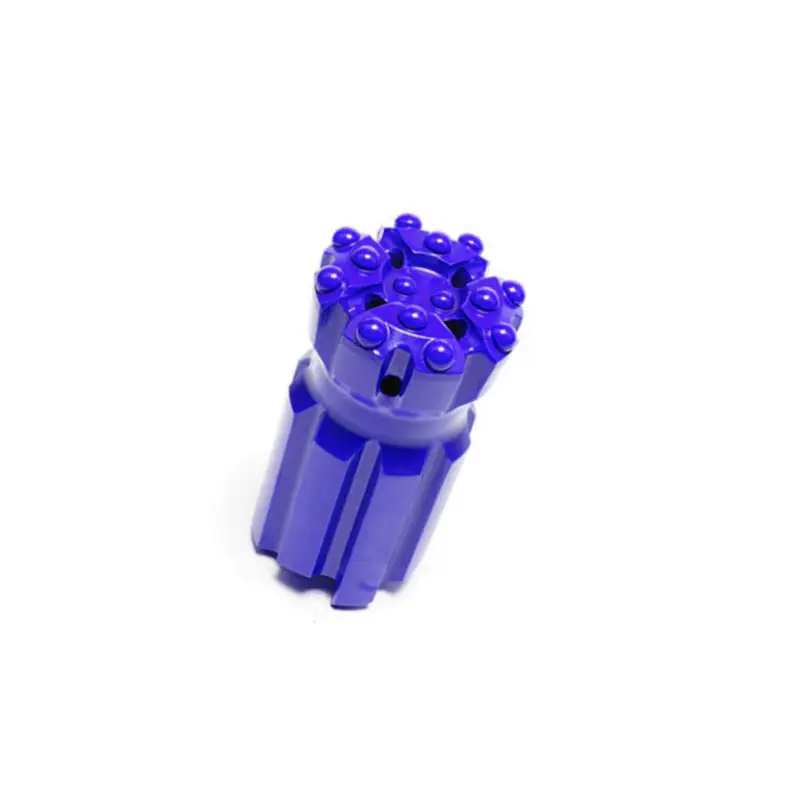
button bits rock drilling
We offer a comprehensive range of robust button bits designed for efficient and reliable rock drilling. Featuring high-quality tungsten carbide buttons, our bits deliver excellent penetration rates and extended service life in various rock types. Engineered for durability and performance, they ensure optimal results and minimize downtime for your drilling operations. Explore our selection to find the perfect button bit for your specific rock drilling needs.
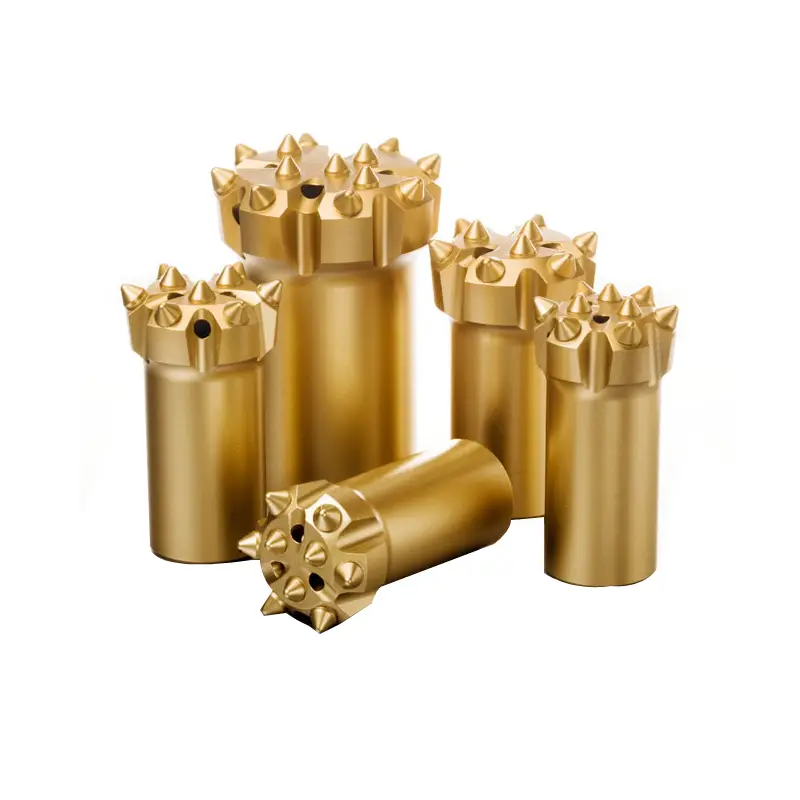
soft rock button bits for drilling
We offer specialized soft rock button bits designed for efficient and rapid penetration. These bits feature optimized button configurations and durable carbide grades suited for softer formations like sandstone and shale. Their design maximizes cutting action and chip removal, ensuring fast drilling rates and reduced bit wear. Choose from our range of sizes and designs to achieve optimal performance and cost-effectiveness in your soft rock drilling projects.
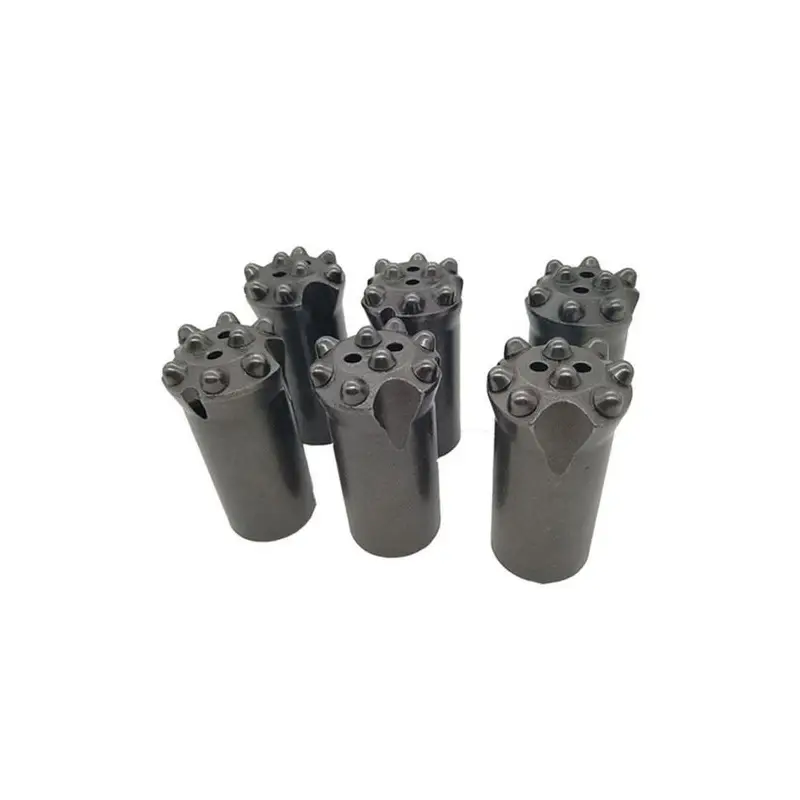
high speed steel rock button bits for drilling
While our primary focus is on carbide button bits for superior hardness and wear resistance in rock drilling, we understand the need for various solutions. We offer a selection of high-speed steel (HSS) button bits for specific, less demanding rock drilling applications where cost-effectiveness is a priority. These HSS bits provide a more economical option for softer rock types and smaller projects. Contact us to discuss your specific drilling needs and determine the best bit for your application.
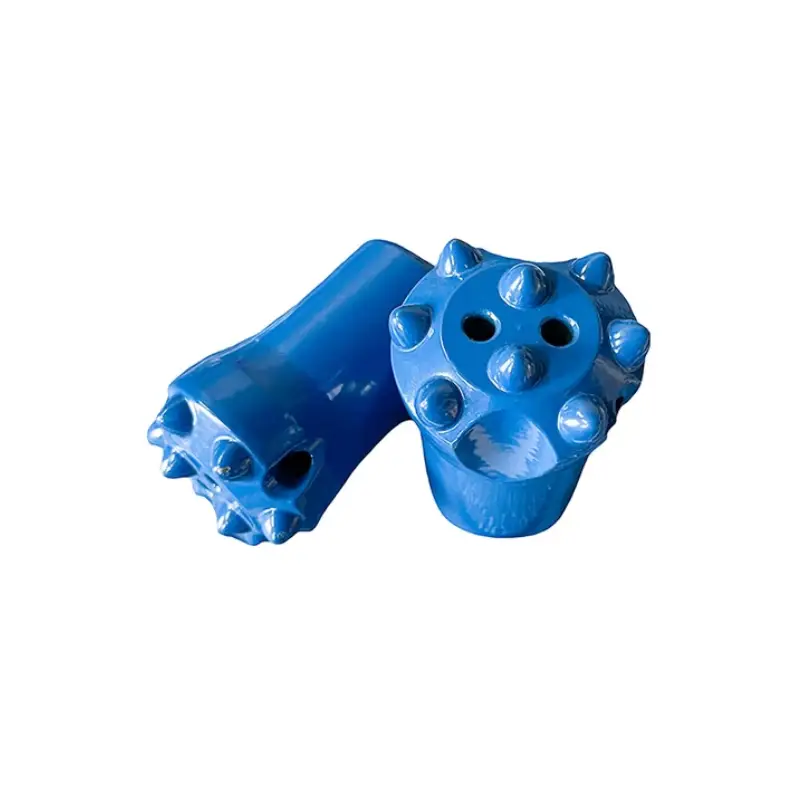
high speed steel rock button bits for drilling
We offer tapered button bits specifically designed for efficient rock drilling. Featuring robust tungsten carbide buttons, these bits deliver excellent penetration rates and wear resistance in various rock types. The tapered connection ensures a secure and effective energy transfer to the drill bit. Available in multiple sizes and taper angles, our bits provide reliable performance and extended service life for your rock drilling projects.
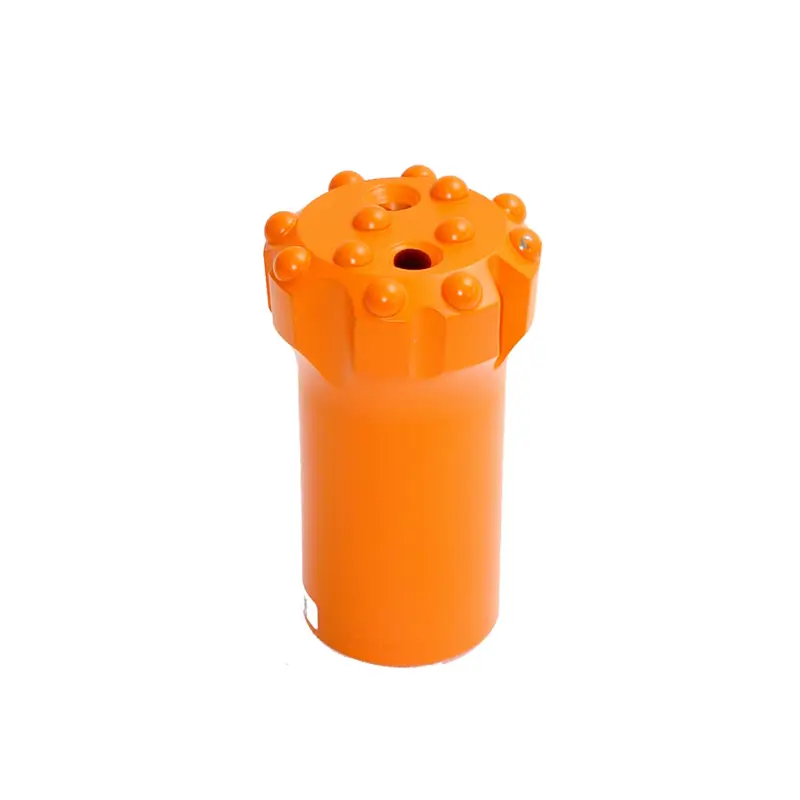
T38 rope thread for rock drilling
Our selection includes T38 rope thread button bits, specifically designed for efficient rock drilling. The robust rope thread connection ensures a secure and reliable link with your drill string, maximizing power transfer and minimizing energy loss. Combined with our premium carbide buttons, these bits deliver excellent penetration rates and extended service life in various rock types. Choose our T38 rope thread button bits for dependable performance and increased productivity in your drilling operations.
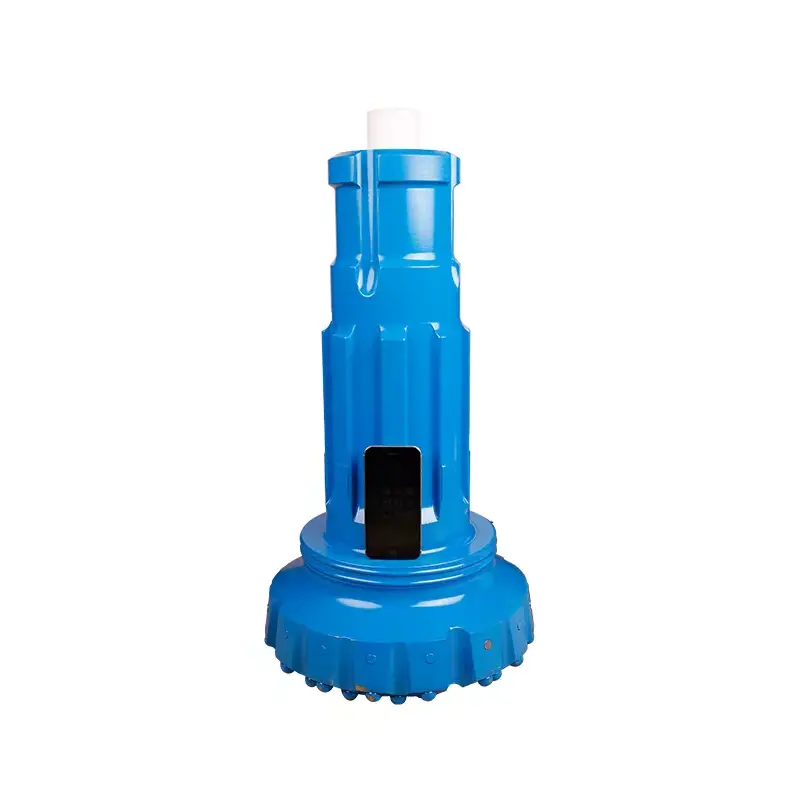
DTH button bits for rock drilling
Our DTH (Down-The-Hole) button bits deliver powerful and efficient rock drilling performance. Designed for use with DTH hammers, these bits excel in fracturing hard rock formations. Featuring robust tungsten carbide buttons, they ensure rapid penetration rates and extended service life. Available in various sizes and shank types to match your specific DTH hammer and drilling needs, our bits maximize productivity and minimize downtime in demanding applications.
Customize Your Desired Button Bit for Rock Drilling
Button Shape and Arrangement
Optimize drilling efficiency by selecting the ideal button shape (e.g., domed, ballistic) and arrangement. Different shapes excel in various rock types, influencing penetration rate and bit lifespan. The pattern and density of buttons impact chip removal and drilling stability, ensuring efficient rock fracturing.
Bit Body Design and Steel Grade
Choose a bit body design that offers optimal strength and durability for your drilling conditions. The grade of steel used in the body affects its resistance to wear and fatigue. Efficient flushing hole design is also crucial for effective cuttings removal, preventing clogging and maintaining drilling performance.
Carbide Grade and Wear Resistance
Select the appropriate tungsten carbide grade based on the abrasiveness and hardness of the rock. Higher-quality carbides provide superior wear resistance and extend bit life, reducing replacement costs and downtime. Matching the carbide grade to the application ensures optimal drilling performance and longevity.
Shank Type and Connection
Ensure compatibility with your drilling equipment by specifying the correct shank type (e.g., threaded, DTH). A proper connection ensures efficient power transfer from the drill string to the bit. Accurate threading and a secure fit are essential for preventing bit loss and maximizing drilling efficiency and safety.
what are button bits?
Button bits are rock drilling tools that consist of a steel body embedded with durable tungsten carbide buttons.
These buttons are the cutting elements that directly impact and fracture the rock as the drill rotates and applies pressure. The strategic arrangement and design of these carbide inserts are crucial for efficient rock removal and the overall performance and lifespan of the bit.
Button bits are widely used in mining, quarrying, construction, and water well drilling for their ability to penetrate hard and abrasive rock formations effectively and offer superior wear resistance compared to traditional drill bits
why use button bits for rock drilling?
Button bits are the preferred choice for rock drilling due to their superior performance and cost-effectiveness compared to other drilling methods.
Their design, featuring robust tungsten carbide buttons embedded in a steel body, offers significant advantages in demanding rock drilling applications.
Here are the key reasons why button bits are used for rock drilling:
- Exceptional Hardness and Durability: Tungsten carbide is an incredibly hard and wear-resistant material, allowing button bits to effectively penetrate even the toughest rock formations while maintaining their sharpness for longer periods.
- Efficient Rock Fracturing: The strategic placement and design of the carbide buttons concentrate impact energy, leading to more efficient rock breaking and faster penetration rates.
- Extended Bit Lifespan: Due to the durability of tungsten carbide, button bits last significantly longer than traditional steel bits, reducing the frequency of replacements and minimizing downtime.
- Versatility in Various Rock Types: Different button shapes and configurations are available to optimize performance in a wide range of rock conditions, from soft to extremely hard and abrasive formations.
- Improved Drilling Stability and Control: The design of button bits often contributes to better hole straightness and stability during drilling, which is crucial for accurate and efficient operations.
- Cost-Effectiveness: While the initial cost might be higher than some other bit types, the extended lifespan and reduced downtime associated with button bits ultimately lead to lower overall operational costs.
what types of button bits for rock drilling?
Button bits for rock drilling come in various types, each designed for specific drilling conditions and applications.
The key differentiators lie in their connection type, button shape, and overall design.
Here are some common types of button bits that you can use for rock drilling:
- Threaded Button Bits: These bits have a threaded connection for attaching to drill rods and are commonly used in top hammer drilling for mining, tunneling, and construction. They come in various thread standards (e.g., R25, R32, T45) and head diameters.
- Tapered Button Bits: Featuring a tapered shank, these bits are designed to fit directly into tapered drill rods, typically used with handheld or pneumatic rock drills in quarrying and smaller-scale mining operations.
- DTH (Down-The-Hole) Button Bits: These bits are used with DTH hammers for drilling deeper holes in mining, water well drilling, and construction. They are characterized by their shank type that connects directly to the hammer.
- Retrac Button Bits: Designed with a skirt that retracts slightly during drilling, these bits help improve hole cleaning and reduce wear on the bit body, particularly useful in fractured or broken rock formations.
- Different Button Shapes: The tungsten carbide buttons themselves come in various shapes like spherical (domed), ballistic, conical, and flat-top, each optimized for different rock hardness and drilling aggression.
how to drill rocks with button bits?
Drilling rocks with button bits involves a systematic process that leverages the bit’s robust design to fracture and remove rock material. Achieving optimal drilling performance requires careful attention to each step, ensuring efficient energy transfer and effective cuttings removal.
Let’s delve into the key stages of this process to drill rocks using button bits.
1. Preparation and Setup
Before commencing drilling, thorough preparation is crucial for a safe and efficient operation. This involves selecting the appropriate button bit type and size based on the rock formation and drilling requirements. Ensure the bit is securely attached to the drill string or hammer, and all connections are tightened correctly.
Verify the functionality of the drilling rig, including the rotation mechanism, feed system (applying downward pressure), and the flushing system (air or water) that will remove rock cuttings from the borehole. Proper alignment of the drill string with the intended borehole location is also essential for accurate drilling.
2. Collaring the Hole
Initiating the borehole, known as collaring, requires a slow and steady approach to ensure proper alignment and prevent bit damage. Begin drilling with reduced rotation speed and feed pressure, allowing the bit to establish a stable starting point on the rock surface.
Gradually increase the rotation and pressure as the bit penetrates a few centimeters into the rock. Maintaining stability during this initial phase is critical to prevent the bit from wandering or breaking, ensuring the borehole starts in the desired location and with the correct orientation.
3. Drilling and Penetration
Once the hole is collared, the drilling process involves the continuous rotation and application of downward pressure (feed) on the button bit. The tungsten carbide buttons on the bit face impact and crush the rock, creating small fragments or cuttings.
The efficiency of penetration depends on factors such as the rock hardness, the type and condition of the button bit, the applied feed pressure, and the rotation speed. Maintaining consistent pressure and rotation is important for optimal drilling rates and to prevent excessive wear on the bit.
4. Cuttings Removal (Flushing)
Efficient removal of rock cuttings from the borehole is vital for maintaining drilling performance and preventing the bit from becoming stuck. This is typically achieved by using compressed air or water pumped through the drill string and out through flushing holes in the bit.
The flushing medium carries the cuttings up and out of the borehole. Adequate flushing ensures that the bit remains in contact with fresh rock, maximizing penetration rates and extending the lifespan of the bit by preventing excessive abrasion from accumulated debris.
5. Monitoring and Adjustment
Throughout the drilling process, it’s essential to continuously monitor various parameters, such as the drilling rate, rotation speed, feed pressure, and the effectiveness of cuttings removal.
Listen for any unusual noises or vibrations that might indicate a problem, such as bit wear, blockage, or unstable ground conditions. Based on these observations, adjustments to the drilling parameters may be necessary to optimize performance and ensure the safe and efficient completion of the borehole to the desired depth.
Send Your Inquiry Now
All-in-one Button Bit for Rock Drilling Solutions for Your Project
Simplify your rock drilling projects with our comprehensive all-in-one button bit solutions. We offer a diverse range of high-performance bits designed for various rock types and drilling applications. From threaded and DTH to tapered options, coupled with optimized button configurations, we provide everything you need for efficient and reliable drilling. Maximize productivity and minimize downtime with our tailored and durable solutions. Partner with us for a seamless drilling experience.


